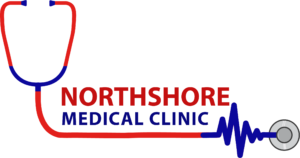What is PRP for hair loss?
To stop hair loss, we have been using PRP therapy for a while. PRP means “platelet-rich plasma“. Our blood contains a wide variety of living cells. PRP is the patient’s concentrated, enriched blood plasma. PRP against hair loss contains a particularly high amount of blood platelets, growth factors and proteins. The PRP can stimulate rejuvenation and cell regeneration at the hair root in the scalp. This so-called autologous cell regeneration can stop hair loss and stimulate hair growth.
There are hardly any serious risks of PRP against hair loss.
How does PRP therapy work?
The autohemotherapy against hair loss is carried out on an outpatient basis and takes no longer than an hour. An anesthetic is not necessary, but can be used locally if desired.
Blood is taken from the patient before treatment with PRP. This is specially prepared so that you get blood plasma that is particularly rich in thrombocytes (blood platelets). It is also possible to add drugs or the like to the plasma. The PRP is then injected into the scalp in a targeted manner. This is done using a very fine needle to avoid pain.
The first results are visible a few weeks after the treatment. However, for a satisfactory result, it may be necessary to repeat the treatment. As a rule, one to three treatments are necessary at intervals of a few weeks or months.

What criteria must be met in order for a patient to be suitable for PRP therapy?
The autologous blood treatment against hair loss is well suited for most people with the beginning of hair loss. Since only autologous blood is used, the occurrence of intolerances or allergies can be ruled out. However, care should be taken to ensure that the scalp is free of inflammation and injury. Pregnancy or certain autoimmune diseases can also exclude a patient from treatment with PRP.
In general, autohemotherapy is suitable for people with the beginning of hair loss. If the hair loss is already massive, treatment with PRP is no longer sufficient to stop it and stimulate hair growth again. Instead, a hair transplant is necessary. Combined with a PRP treatment, this promises very good results.
Treatment success of PRP against alopecia
PRP, its growth factors and stem cells significantly stimulate cell renewal in the hair root and the regeneration of old hair root cells. PRP improves blood circulation in young hair and hair roots and regenerates dying hair roots. Hair loss is slowed down and new hair growth is accelerated. A natural balance between metabolic and hormonal factors is restored.
What are the risks of treatment with PRP?
PRP for Hair Loss is one of the safe procedures of aesthetic medicine. Since only autologous blood is used, defensive reactions to the injected substance, such as intolerance and allergies, can be ruled out. The risk of infection is reduced to a minimum by complying with all hygiene regulations.

